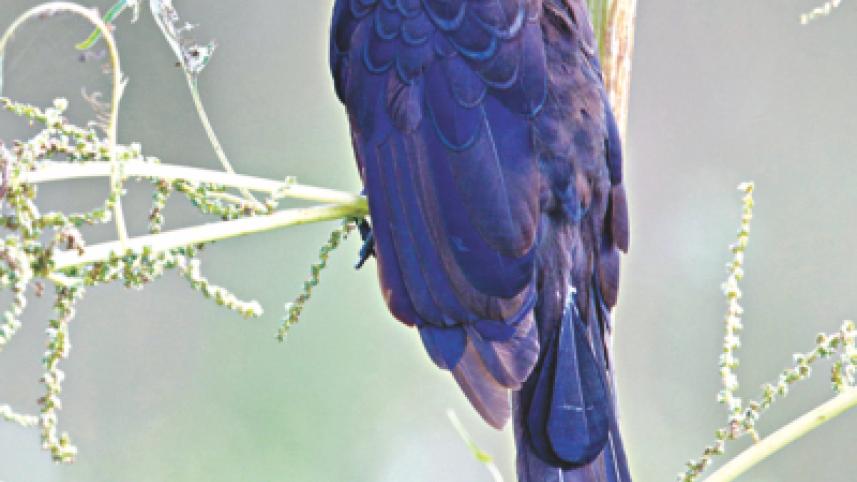The Smooth-Billed Ani

So much of birdwatching depends on luck.
When I planned a two-day trip to Florida during a recent USA visit, birds were not on my mind. I wanted to see my brother Imtiaz, my old friend Tutul, and their families. I was planning three quiet days near Miami relaxing with family and friends.
Two days before my flight, Tutul sent me a link to a newspaper article about Florida birding. I discovered to my delight that Florida is indeed a haven for birds. Even in late summer, when it is off-season for birds, there was plenty to see.
So after I landed in the afternoon, we headed to Arthur R. Marshal Loxahatchee National Wildlife Refuge. It was mentioned in the article and an hour's drive away. With two hours of sunlight left when we entered the Refuge, we skipped the Visitor Center and directly went to a trail that ran through fields and scrubland along some canals. We saw some great egrets (boro bok) while moorhens played among the water plants. After an hour of exploring, we returned to the car and drove further along the main road which ended at a canal. Several people were fishing from a pier. An huge alligator, perhaps fifteen feet long, remained submerged in the water, its eyes watching us. Stormclouds gathered in the western sky and the setting sun created beautiful colours. Flocks of ibis, herons and egrets flew home to their roost.
We sensed there was more to see and returned early next morning. This time we saw more birds: limpkins (with long beaks), a blue heron, tri-coloured herons, and some songbirds. Near the Visitor Center a boardwalk enabled us to walk through a cypress forest submerged in water, reminiscent of mangroves. Entering the Center we asked a Ranger for recommendations. "Have you seen the ani," he asked us." There were so many here last week that we had to cordon them off."
I had never heard of, let alone seen, an ani. So we asked him for a description and location. Then we went off in the hot Florida sun looking for it.
As we approached the area – basically a swamp crisscrossed by dry trails and canals – I saw a black bird perched on a relatively tall plant. It looked like a fingey (drongo) from the distance but coming closer we noticed its parrot-like beak, confirming it was an ani.
I took several photographs of the ani. Later that day at my brother's house, I googled it. The smooth-billed ani lives in open fields and scrubland of the savannah of central and South America. Occasionally, it flies north all the way to south Florida in small groups. They make a communal nest where they lay their eggs. One bird usually guards the nest by sitting at a high spot while the other anis forage for food. This was the bird we saw.
The magnitude of our luck became clear when I learned that no less an expert than the eminent ornithologist John James Audubon himself had searched for the ani in Florida but failed to find it!
www.facebook.com/tangents.ikabir.



 For all latest news, follow The Daily Star's Google News channel.
For all latest news, follow The Daily Star's Google News channel.
Comments